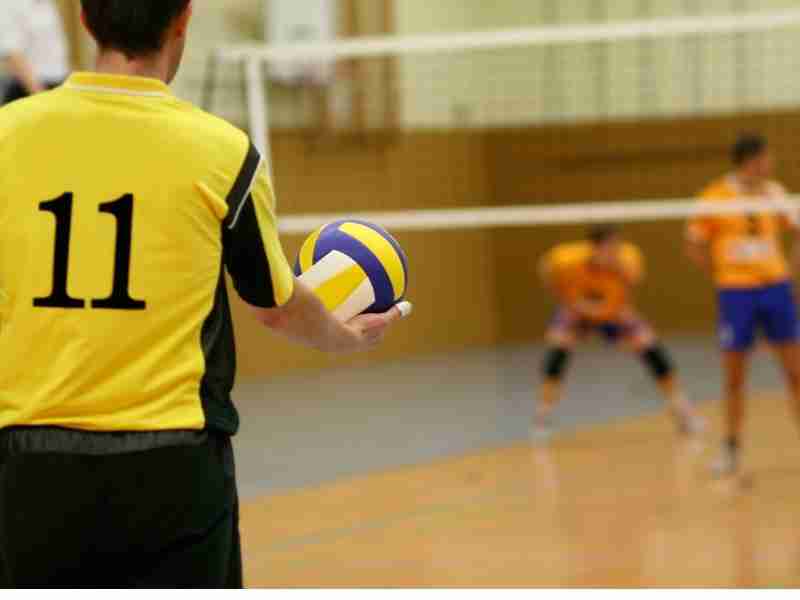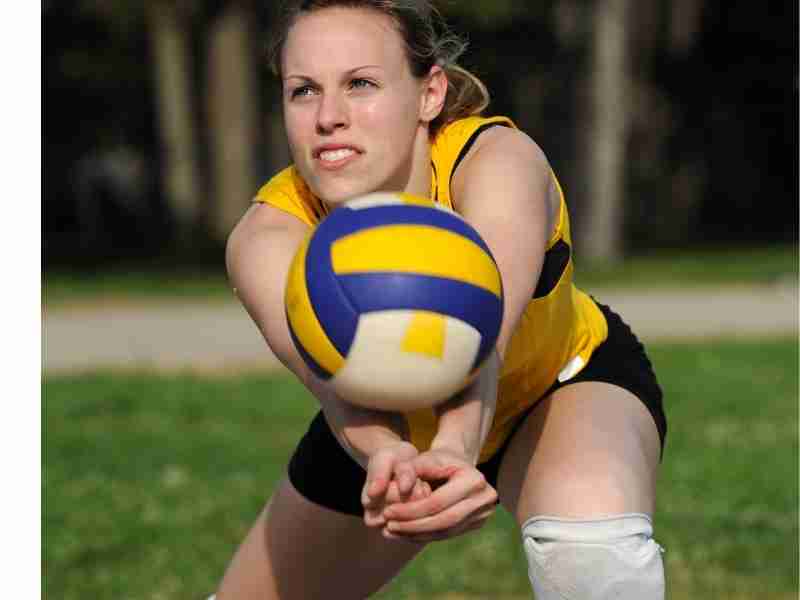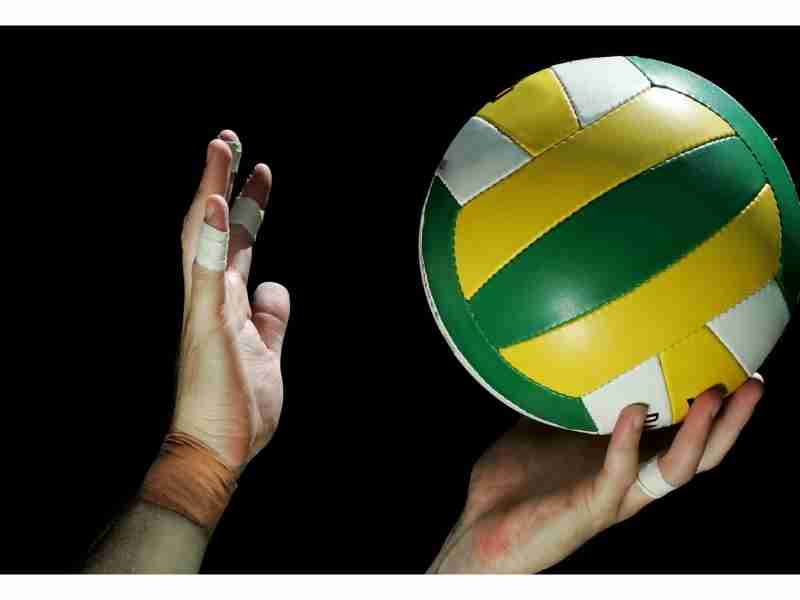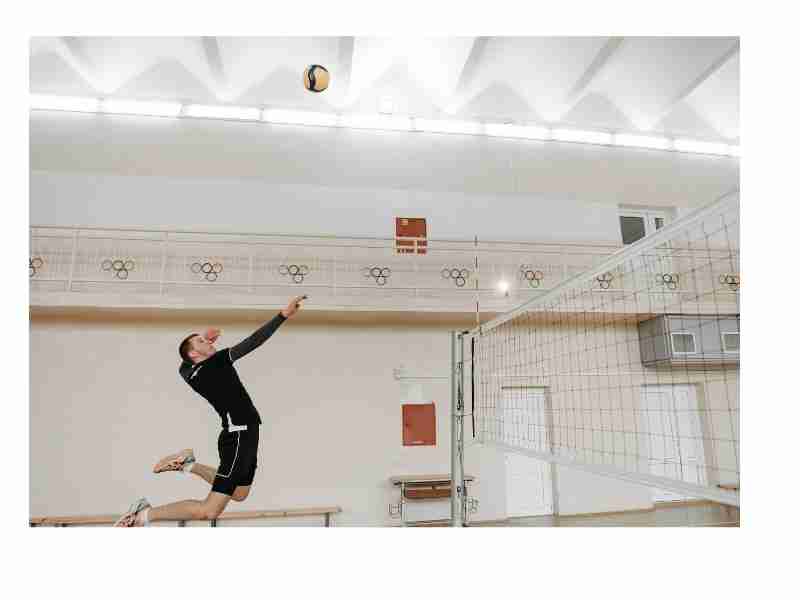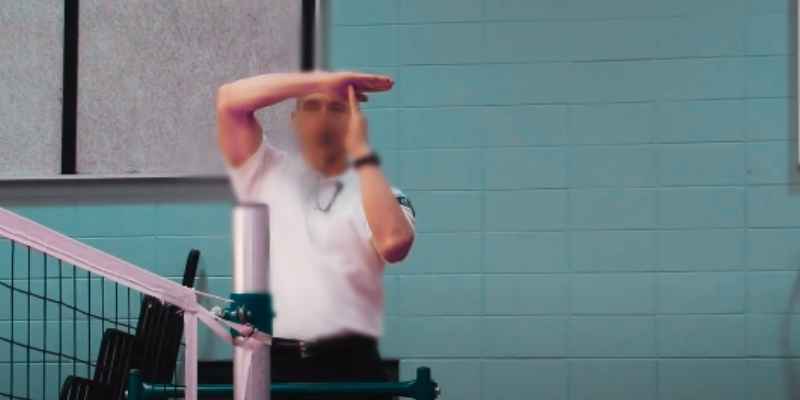
Do you know how to call a timeout in volleyball? If not, you’re not alone! Even experienced players can forget the rules for calling a timeout. It’s very frustrating when your opponent’s coach calls a timeout when they are winning by a lot. Here’s a quick refresher on the rules for timeouts in volleyball.
What Is A Timeout In Volleyball?
Timeouts are usually called to allow players a break, to discuss strategy with teammates, or to make substitutions. When a timeout is called, play will stop, and all players must remain in their current positions on the court. Coaches can step onto the court during a timeout to talk to their players.
Once the timeout is over, play will resume, and the team that called the timeout will lose one of their timeouts for the rest of the set. If a team has no timeouts remaining, they will not be able to call one even if they have an injured player that needs to be replaced.
There is no one-set timeout rule for volleyball. Depending on the competition, different rules may apply.
In USAV and FIVB rules, each team is allowed 2 timeouts per set of 30 seconds.
NCAA volleyball games have a longer time limit than regular volleyball games. The time limit is 75 seconds, but both teams can come onto the court early if they are ready.
In international and FIVB tournaments, teams are given two 60-second timeouts. In general, timeouts give each team a chance to regroup and strategize before continuing the game.
Timeout rules are in place to keep the game moving and to prevent teams from stalling.
There are several reasons why a team might call a timeout. They may need to substitute players or want to make strategic changes to their game plan. Timeouts can also be used to slow down the game’s pace and give the team a chance to regroup.
What Are The Basic Timeout Rules For Volleyball?
In volleyball, timeouts are a significant part of the game. They give teams a chance to rest and strategize and can often be the difference between winning and losing. Here are the basic rules for taking timeouts in volleyball:
Each team is allowed two timeouts per set. A timeout can only be called when the ball is not in play. Only the head coach or a player can call a timeout.
If a team has already used its two timeouts, it cannot call another one even if the other team has not yet used any of its timeouts.
Once a timeout is called, the players on the court must go to their respective bench areas. The players not on the court can also come onto the court during the timeout, but they must stay within their bench area.
During a timeout, coaches are allowed to talk to their players, but they are not allowed to walk onto the court or interfere with the game in any other way.
A team will be given a warning if it violates any of these timeout rules. If the team continues to violate the regulations, it may be penalized by having one or more points taken away.
Volleyball Timeout Length
NCAA volleyball teams are allowed two timeouts of 75 seconds each, which is a little longer than the standard 30-second timeout in FIVB and USAV rules. This will enable coaches to move around more quickly and stop the other team’s momentum.
When one team is scoring well and scoring many points, an NCAA timeout lets them gather more effectively.
However, the 75-second timeout is often too long, and teams are usually ready to continue play before the time is up. If the teams are not prepared, the referee blows the whistle, and they will be forced to start playing early.
The shorter 30-second timeout is more manageable and usually sufficient for FIVB and USAV volleyball. This shorter timeout keeps the game moving and doesn’t give one team too much of an advantage.
The shorter timeout length is more efficient and fair for all teams. This allows coaches to focus on what they need to say in a shorter amount of time.
What Is A Technical Timeout In Volleyball?
A technical timeout (TTO) in volleyball is a break in play that lasts for 60 seconds. It is typically called by the team in the lead, allowing both teams to catch their breath and rest. The TTO can also be used to discuss strategy with your team. Only two TTOs are allowed per set, and the lead team can only call them.
Technical timeouts are essential because they give both teams a chance to rest and regroup. They also allow coaches to discuss strategy with their players. TTOs can be crucial in close matches, and they can often be the difference between winning and losing.
The FIVB has a rule (FIVB-15.4.2) that in sets 1-4, when the leading team reaches the 8th and 16th point, two additional 60-second technical timeouts will be applied automatically.
Teams can request a maximum of two 30-second timeouts.
The FIVB Volleyball Rules 2017 2020 state that the first technical timeout will come when one team reaches 8 points, and the second technical timeout will come when one team reaches 16 points. This is done to ensure that each match is fair and that players have an opportunity to rest. In addition, it allows officials time to address any issues that may have arisen during play.
They are mandatory for FIVB World and Official competitions. This means that you can expect to see a technical timeout if you’re watching a match on television or online. This gives sponsors plenty of time to deliver their message and offers viewers a chance to take a break.
They typically occur after the first set and again after the third set. So if you’re watching a match with four sets, you can expect to see two technical timeouts.
When you watch a volleyball game, keep these things in mind. And don’t forget that they aren’t just for sponsors! Technical timeouts are essential because they give people a chance to take a break and catch their breath. So make sure you use them to your advantage.
Even though timeouts can be helpful in some situations, they can also make a game move much more slowly. This is especially true if all of the timeouts for each team have already been used. It depends on what side of the coin you’re on. A technical timeout might be your only chance to win if your team has lost a few points in a row.
What Is The Official Timeout Signal?
Technical timeouts are 30 seconds long, injury timeouts last any amount of time necessary to treat the injury, and team timeouts are two minutes long. The official timeout signal is a “T” shape made with both arms. The coach signals a timeout by pressing a buzzer first, then making the “T” signal.
Timeout rules during a volleyball game can confuse players and spectators. The following explains the rules governing timeouts during a volleyball match.
If a team doesn’t have an official coach, it’s up to the team captain to tell the refs when to call a timeout. If the team captain is on the bench, it will be up to the floor captain to tell the second referee when timeouts are needed.
Floor captains are often the setters because they constantly communicate with the referee. They will let the ref know when they want a timeout and how many players need to come off the court.
During a timeout, the coach can talk to players, give them instructions, or make substitutions.
After the timeout is over, the players go back to their positions, and the game continues.
If you play in a recreational league, your team probably does not have a coach. But the players on the team help to coach each other. Your team will also have a floor captain, who is often the setter. This player can signal to the referee to call for a timeout.
What Can Volleyball Players Do When There Is A Timeout?
During NCAA college volleyball games, players can use balls in the free zone. This means they can retrieve balls out of bounds and pass them back to their teammates. Players can also move through the free zone, the space behind the court’s baseline.
However, ball handling is not allowed during timeouts for FIVB (Fédération Internationale de Volleyball) and USAV (USA Volleyball) competitions. This is because these timeouts are only 30 seconds long, so there is not enough time to effectively handle the ball. During these timeouts, players are still allowed to run and move through the free zone.
Strategic Timeouts in Volleyball
Service Run
When a team faces a strong server on the other side of the net, one common strategy is to call a timeout to disrupt their rhythm. This can be done by throwing off their timing or disrupting their concentration.
Generally, when a team can get into a rhythm on service, they are more likely to win the point. This is because they can put more pressure on the opposing team and make it difficult for them to execute their offensive game plan.
Make a strategic change
Volleyball is a sport that is full of strategic changes. Whether it is taking a timeout to talk to your team, switching up your lineup, or calling a timeout during play, there are many ways to make a strategic change.
When your team isn’t doing well, it’s one of the most important times to change your strategy. If your team is having trouble, taking a timeout can give you a chance to talk to them and figure out what’s wrong. Often, all it takes to get the team back on track is a few words of encouragement from the coach.
Another time it might be necessary to make a strategic change is when the other team is outplaying you. If the other team is on a roll and you can’t seem to stop them, calling a timeout can give you a chance to regroup and make a change. Often, this might be as simple as switching up your lineup or making a strategic substitution.
Finally, sometimes it is necessary to make a strategic change in the middle of a set. Calling a timeout can be an excellent opportunity if the other team is making a run and you need to stop them. This gives you a chance to talk to your team and figure out what they need to do to get back on track. Often, this might be as simple as making a couple of adjustments.
Changes in strategy can make the difference between winning and losing in any situation. If you can do these things, you will do well.
Momentum Breaking Timeouts
Volleyball teams will often call a timeout to break their opponents’ momentum. This is most commonly done when the opposing team is serving at a set point to throw them off and increase the chances of making an error. Sometimes, a team may call a timeout when they are down by 9 or 10 points to frustrate their opponents.
However, many coaches and players believe it can be an effective strategy, particularly in high-pressure situations. Some studies have shown that taking a timeout can help reduce errors and improve serving accuracy.
While there is no guarantee calling a timeout will lead to success, it can be a helpful tool for disrupting the flow of the game and putting your opponents under pressure. Ultimately, it is up to the coaching staff to decide when and how to use timeouts to give their team the best chance of winning.
FAQs
How Many Timeouts Is A Team Allowed Per Game In Volleyball?
In volleyball, each team typically gets two timeouts. They are 30 seconds long and don’t include timeouts for technical problems or injuries.
How Long Is A Timeout In Volleyball?
In volleyball, most timeouts are 30 seconds long. This includes any timeouts taken by coaches during a game. Technical timeouts, usually used at the collegiate and professional levels, are around 60 seconds long.
Final Thoughts
That’s all for now on volleyball timeouts. Timeouts are a strategic move in the game. They can help your team catch their breath or signal a key moment in the game. We hope you found this post helpful.



